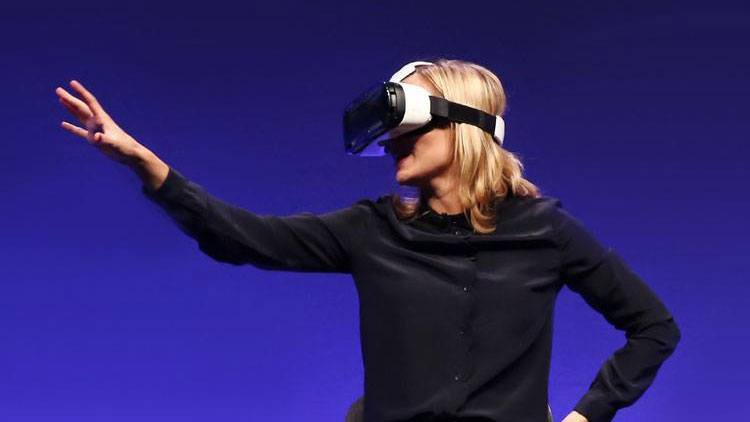- Wondering how to get Monopoly GO! free rolls? Well, you’ve come to the right place. In this guide, we provide you with a bunch of tips and tricks to get some free rolls for the hit new mobile game. We’ll …
Best Roblox Horror Games to Play Right Now – Updated Weekly
By Adele Wilson
Our Best Roblox Horror Games guide features the scariest and most creative experiences to play right now on the platform!The BEST Roblox Games of The Week – Games You Need To Play!
By Sho Roberts
Our feature shares our pick for the Best Roblox Games of the week! With our feature, we guarantee you'll find something new to play!All Grades in Type Soul – Each Race Explained
By Adele Wilson
Our All Grades in Type Soul guide lists every grade in the game for all races, including how to increase your grade quickly!
What to Expect: Mobile Gaming in 5 Years
Five years ago, mobile and tablet gaming was simplistic. Incredibly popular as it was, many of the games weren’t considered high-end or sophisticated but rather served the purpose of killing time between daily activities. In 2010, analyst firm Gartner estimated …

Five years ago, mobile and tablet gaming was simplistic. Incredibly popular as it was, many of the games weren’t considered high-end or sophisticated but rather served the purpose of killing time between daily activities. In 2010, analyst firm Gartner estimated that 70 to 80 percent of all mobile consumer applications downloaded are mobile games. Market research firm Mintel forecasted that mobile phone and tablet gaming sales in the U.S. reached $898 million in 2010, more than doubling since 2005, primarily due to the ubiquity of smartphones and tablets.
![cats-playing-fruit-ninja-super-f[1] cats-playing-fruit-ninja-super-f[1]](https://www.gamezebo.com/wp-content/uploads/2021/08/cats-playing-fruit-ninja-super-f1-1.jpg)
Some of the most popular titles included casual games like Angry Birds or Fruit Ninja – games you could play on the subway or while waiting to see your dentist. The mobile game industry didn’t have the quality graphics or processing power to allow for fully-fleshed back stories or some of the more “mature” components of gaming. This meant that hardcore gamers, for the most part, tended to stick with AAA console titles. That’s changed considerably now, with many new titles being released with assets like theatrical soundtracks and current-gen graphics that were once reserved only for traditional gaming.
The dramatic maturity of mobile gaming over the last five years is a good indication that the next five years promises to bring about an even bigger explosion of innovation and growth. In fact, according to a report from mobile game marketing firm AppLift and market researcher Newzoo, mobile games revenue is expected to double to more than $35 billion by 2017. It’s safe to say that the prestige of mobile games will only increase as more people flock to it and the revenue flows in. So what should be expected in the next five years?
IP’s aren’t just for the consoles

An IP, or Intellectual Property, is an individual franchise or series like Super Mario Bros or Halo that have historically played in just the console space. However, the future of mobile gaming lies with new and original titles coming exclusively to mobile first, rather than being ports or spin-offs of social or console games. This trend has already begun, with Warner Brothers opening a F2P studio in San Francisco and Marvel partnering with Kabam to produce the “Contest of Champions” mobile game. Many other developers such as Nintendo, Disney, EA, Ubisoft and Square Enix, have already pledged support for mobile moving forward. Now that mobile is the fastest-growing sector in the game industry, it will become the de facto platform to bring new and original content straight into the hands of users.
More Localization for mobile games

With the ubiquity of smartphone and tablet use worldwide and the extreme popularity of mobile gaming in non-U.S. countries, localization will become even more important when producing new games. If a game wants to attract users from regions as varied as South Korea to Egypt, it’s imperative to remember that each user base is looking for something slightly different, and the most successful games will tailor games to the local user base. Each country and each audience is unique, and mobile games will become more fragmented to reflect that.
Successful mobile games will implement more localization into their titles to appeal to a vast array of audiences. An example of this happening is China, where localization is extremely important because not only do language and graphics matter, but so do factors like bandwidth limit and cultural sensitivity. An example of successful localization includes QuizUp, a trivia game that started off with just English and then localized into four languages (German, Spanish, French and Portugese), and immediately, its user growth jumped to 20 million international users. This kind of growth means that other games will follow suit, many of which already have begun.
Quality of graphics, game play will all get much better
![screen1136x1136[1] screen1136x1136[1]](https://www.gamezebo.com/wp-content/uploads/2021/08/screen1136x1136130-2.jpeg)
Enhanced visual effects have become de rigueur in mobile games, as smartphones have recently been able to keep up with consoles in terms of quality and offer less hardware commitment for the consumer. Gamers now expect quality graphics on their mobile phones and tablets – as they get bigger and continue to improve screen resolution with every new iteration, resulting in an even better gaming experience. The clarity of an iPhone 6 screen, for example, is already up to par with the latest consoles. Mobile games that do not keep up with this newfound customer expectation will be left behind in the resulting 5 years. Considering that the future of mobile gaming is inextricably tied to mobile hardware, the quest for console-quality mobile games will continue to increase as user’s smartphones become more sophisticated.
Virtual Reality on Mobile
With the immense size and popularity of smartphones today, it isn’t much of a stretch to say the line between mobile phones and handheld consoles are blurring. As handheld consoles continue to improve and launch new iterations into the market – a maneuver Nintendo has famously perfected with the 3DS – mobile is the clear winner in terms of device investment. After all, most people feel they need a smartphone in this day and age. With major third-party developers committing to the mobile games space, the one key advantage that handhelds still have are superior controls. Over the next 5 years, we’re going to see major leaps and bounds in the segment of headsets offering a virtual reality experience; ultimately alleviating the stigma of mobile’s control-based shortcomings. In fact, last year, Google released its cardboard headset that also holds a smartphone in front of the eyes in a similar way to Apple’s recently uncovered VR Headset patent which is built to specifically accommodate an iPhone. With more mature and complex games on the horizon, the devices we use to interact with our mobile games and the engagement they deliver, will surely have to evolve accordingly.
Some believe that mobile will take over console gaming, but before that can happen we will see the seamless connectivity between mobile devices and traditional devices such as large screens and console gaming devices. A lot of this innovation on mobile will likely be bolstered by a more varied funding environment for gaming. Government used to be the driving force of research and innovation, but today it’s happening on funding platforms like Kickstarter and from entertainment companies. As entertainment continues to grow and flourish beyond movies and TV, millions of dollars are generated toward gaming franchises, and that’s how the future of gaming will likely be funded.
Ivan Vorobeychyk is the Director of Technology at Plarium as well as one of Plarium’s co-founders; with more than 9 years of experience in technology development in areas of algorithm development, 3D downloadable client based games, 3D and scientific systems programming.
More articles...
Monopoly GO! Free Rolls – Links For Free Dice
By Glen Fox
Wondering how to get Monopoly GO! free rolls? Well, you’ve come to the right place. In this guide, we provide you with a bunch of tips and tricks to get some free rolls for the hit new mobile game. We’ll …Best Roblox Horror Games to Play Right Now – Updated Weekly
By Adele Wilson
Our Best Roblox Horror Games guide features the scariest and most creative experiences to play right now on the platform!The BEST Roblox Games of The Week – Games You Need To Play!
By Sho Roberts
Our feature shares our pick for the Best Roblox Games of the week! With our feature, we guarantee you'll find something new to play!All Grades in Type Soul – Each Race Explained
By Adele Wilson
Our All Grades in Type Soul guide lists every grade in the game for all races, including how to increase your grade quickly!








